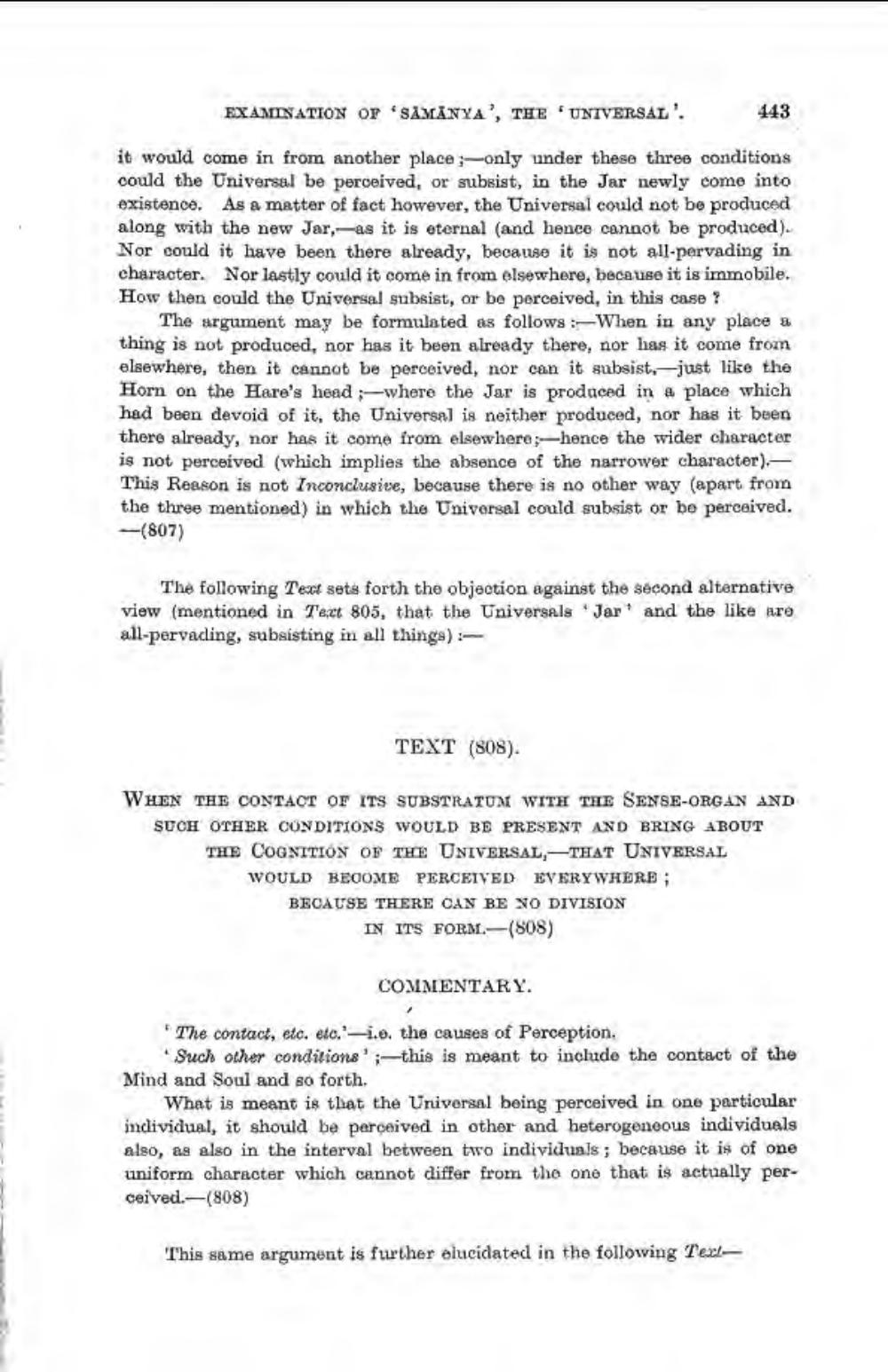________________
EXAMINATION OF SAMANYA', THE UNIVERSAL'.
443
it would come in from another place ;-only under these three conditions could the Universal be perceived, or subsist, in the Jar newly come into existence. As a matter of fact however, the Universal could not be produced along with the new Jar, as it is eternal (and hence cannot be produced). Nor could it have been there already, because it is not all-pervading in character. Nor lastly could it come in from elsewhere, because it is immobile. How then could the Universal subsist, or be perceived, in this case ?
The argument may be formulated as follows :-When in any place a thing is not produced, nor has it been already there, nor has it come from elsewhere, then it cannot be perceived, nor can it subsist, -just like the Horn on the Hare's head where the Jar is prodaced in a place which had been devoid of it, the Universal is neither produced, nor has it been there already, nor has it come from elsewhere; hence the wider character is not perceived (which implies the absence of the narrower character).This Reason is not Inconclusive, because there is no other way (apart from the three mentioned) in which the Universal could subsist or be perceived. -(807)
The following Text sets forth the objection against the second alternative view (mentioned in Tect 805, that the Universals "Jar and the like are all-pervading, subsisting in all things) :
TEXT (808)
WHEN THE CONTACT OF ITS SUBSTRATUN WITH THE SENSE-ORGAN AND SUCH OTHER CONDITIONS WOULD BE PRESENT AND BRING ABOUT THE COGNITION OF THE UNIVERSAL, THAT UNIVERSAL WOULD BEOOME PERCEIVED EVERYWHERE ; BECAUSE THERE CAN BE NO DIVISION
IN ITS FORM-(808)
COMMENTARY.
The contact, etc. etc. - i.e. the causes of Perception.
Such other conditions' ;-this is meant to include the contact of the Mind and Soul and so forth.
What is meant is that the Universal being perceived in one particular individual, it should be perceived in other and heterogeneous individuals also, as also in the interval between two individuals; because it is of one uniform character which cannot differ from the one that is actually perceived.—(808)
This same argument is further elucidated in the following Text




